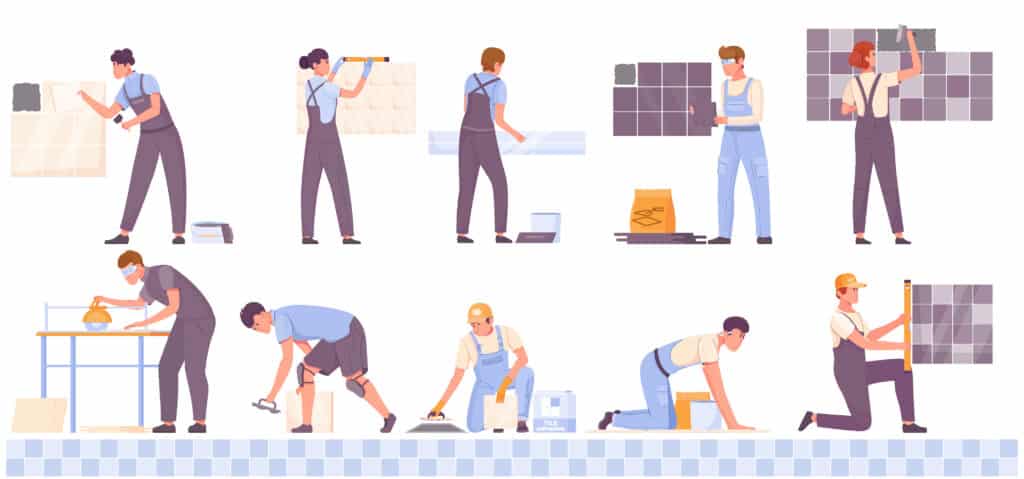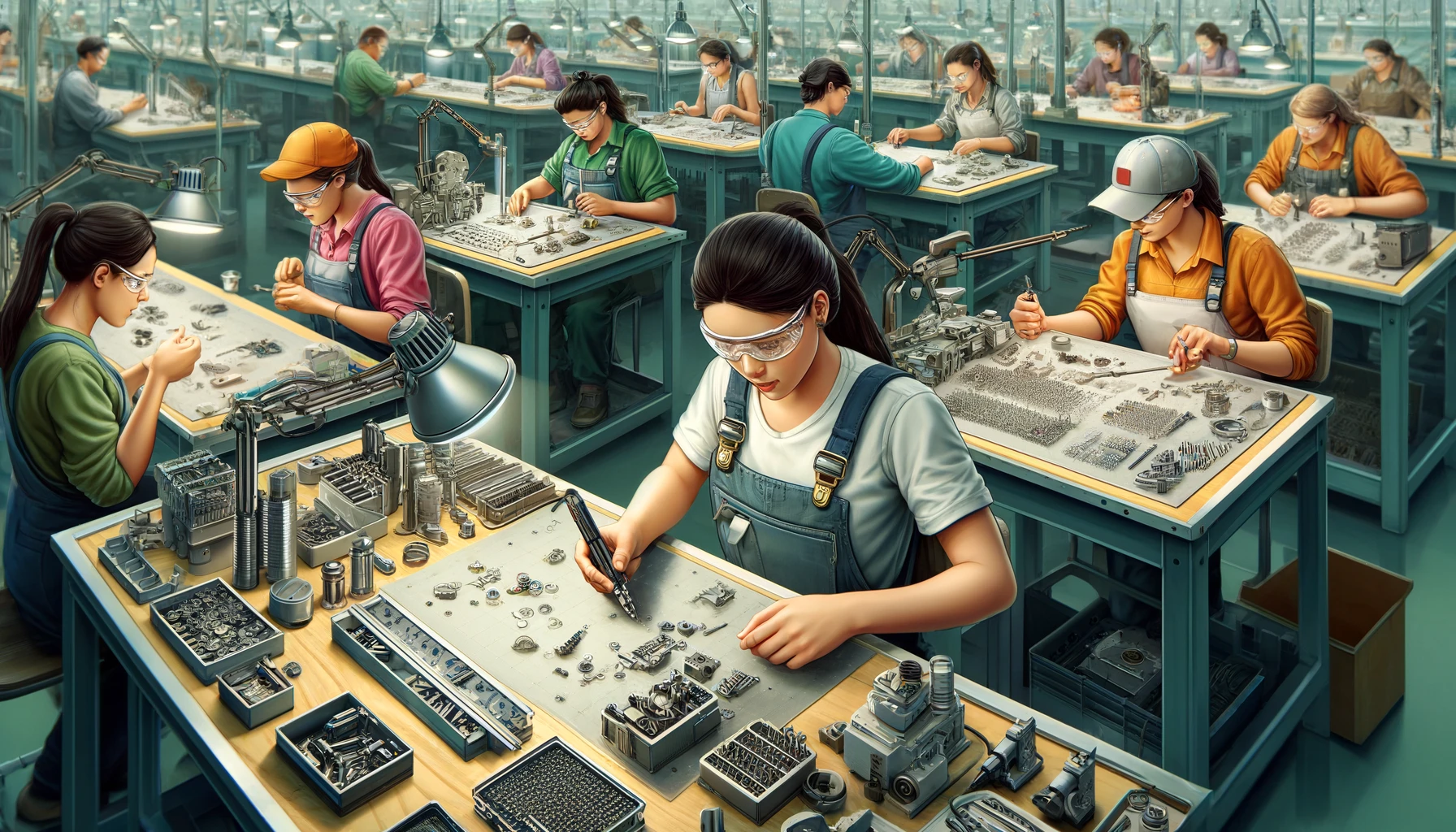In the evolving landscape of Indian manufacturing, a noticeable shift toward gender inclusivity has emerged on shopfloors. Across various sectors, from automotive to electronics, companies are increasingly favouring women for roles on the shop floor. This transition is propelled not merely by the pursuit of diversity but by a recognition of the distinctive skills and attributes that women contribute to these positions.
It is evident from industry insights and corporate disclosures – such as those from big players like MG Motor India and Minda Corp – that the number of women employed in manufacturing roles has increased significantly. MG Motor India boasts a diversity rate of 37%, proudly noting that their 50,000th vehicle was assembled by an all-women crew. “With women comprising 25% of our nationwide shop floor workforce, their invaluable contributions resonate across our operational landscape,” said Ajay Singhroha, group CHRO, Minda Corp.
Source: Economics Times
- More than 25% of women comprise of the shopfloor workforce in Minda Corp.
- 60 – 90% of third-party staffing deployment for assembly lines in many companies consists of women.
- Women excel in dexterity skills and are good at work that needs precision.
- Attrition among women is 40% lower than male counterparts.
- Women demonstrate better productivity then men.
Reasons for the Shift in Preference on Shopfloors
The preference for hiring women can be attributed to several factors. Notably, women excel in tasks requiring dexterity and precision—key skills for assembling small components and operating sophisticated machinery. These capabilities are increasingly vital in modern manufacturing environments where precision is more critical than physical strength. Moreover, women are acknowledged for their rapid learning abilities and lower attrition rates, which are invaluable in sectors experiencing high employee turnover.
The shift in preference towards employing women on shop floors in India is not merely a trend but a strategic decision based on several compelling reasons. These reasons revolve around the unique attributes and skills women bring to the workplace, which align well with the evolving needs of modern manufacturing industries.
- Skill in Precision Tasks: In industries where the assembly of small, intricate components is crucial, such as in electronics and automotive manufacturing, precision is paramount. Women have shown exceptional dexterity and attention to detail in these roles, often outperforming their male counterparts in tasks that require fine motor skills and meticulousness.
- Adaptability and Learning Curve: In the context of industries that are rapidly evolving with technological advancements, the ability to learn quickly and adapt to new processes is invaluable. Women’s aptitude for learning and mastering new skills, such as operating advanced manufacturing machinery and robotics, makes them highly desirable employees in sectors that are increasingly reliant on tech-driven processes.
- Lower Attrition Rates: Women tend to have higher job satisfaction and loyalty rates, which are crucial for industries that invest heavily in training and developing their workforce. The lower turnover rates among women not only reduce recruitment and training costs but also help maintain consistency and quality in production lines.
- Enhanced Work Environment: Employing women can lead to a more disciplined and harmonious work environment. Diverse teams that include women tend to exhibit better cooperation and communication, attributes that enhance productivity and operational efficiency. The presence of women on the shop floor can also drive a more responsible and mature workplace culture, which contributes to reduced workplace conflicts and smoother team dynamics.
- Societal and Regulatory Support: The shift is also supported by changing societal attitudes and regulatory frameworks that encourage gender diversity in all sectors, including manufacturing. Initiatives like government-led diversity drives and incentives for companies that employ women in traditionally male-dominated fields have bolstered the shift. Such policies not only support the economic empowerment of women but also help industries tap into a broader talent pool.
- Economic Benefits and Innovation: From an economic perspective, employing women leads to greater innovation and creativity on the shop floor. Diverse teams are known to approach problems differently, leading to more innovative solutions and improvements in processes and product design. Additionally, as the global market becomes more competitive, having a diverse workforce can provide a strategic advantage by broadening the perspectives and ideas that influence business decisions.
Benefits of Having Women on the Shop Floor

“There is a preference to hire women on assembly lines,” said Lohit Bhatia, president of workforce management at leading staffing company Quess Corp. He said women have nimble fingers and are good at work such as putting small components and parts together.
“In many of the projects for auto and electronics manufacturers where we have deployed third-party staffing resources, 60-90% are women,” he said. “The common thread that runs through many of these profiles is that women are more attentive and focused on precision or accuracy.”
Lower attrition and better productivity are major reasons for companies to prefer women in assembly line roles, said Kartik Narayan, CEO, staffing, TeamLease Services. “Attrition of the blue-collar male workforce employed in manufacturing is 5% to 6% a month and is 40% less for women at 3% to 3.6%,” he added.
“Factories are conducting dedicated drives to hire women as they are facing a big talent shortage,” said Sumit Kumar, chief strategy officer, TeamLease Degree Apprenticeship. He also added that “Many of these factories are located on the outskirts and as a result there is a lot of mobilization of young girls from the neighboring villages. We have seen a 4-5x surge in demand in the last six-eight months. Some of the OEMs have up to 80% women in their assembly lines.”
Challenges Women Face on the Shopfloors
Despite the growing preference for employing women on shop floors, significant challenges persist that can hinder their integration and success in these roles. Addressing these challenges is crucial for companies looking to leverage the full potential of a diverse workforce.
- Workplace Culture and Bias: One of the most significant barriers is the prevailing workplace culture and biases that still exist in traditionally male-dominated sectors like manufacturing. Women often face stereotypes regarding their capabilities, particularly in roles that historically required physical strength or technical skills. Overcoming these biases requires active efforts from management through training programs, awareness sessions, and strong policies that promote gender equality.
- Inadequate Facilities: Many manufacturing facilities were not designed with women in mind, leading to a lack of appropriate amenities such as restrooms and changing areas. The absence of these basic facilities can create discomfort and pose health risks, making the work environment less conducive and safe for women. Companies need to invest in upgrading their infrastructure to ensure that all employees, regardless of gender, have access to the necessary facilities.
- Safety Concerns: Safety is another critical concern, with women often facing higher risks of harassment and safety issues both within and en route to the workplace. Ensuring safety involves not only physical security measures such as well-lit parking areas and secure transportation options but also creating a culture where women feel safe to report incidents without fear of retaliation or stigma.
- Work-Life Balance: Manufacturing jobs can be demanding, with rigid schedules that may not consider the caregiving responsibilities that women disproportionately carry. Companies can support women by offering more flexible working hours, on-site childcare facilities, or options for part-time shifts, which can help women balance their professional and personal lives more effectively.
- Professional Development and Growth: Women on shop floors often encounter glass ceilings, limiting their advancement to senior roles. This limitation is frequently due to preconceived notions about women’s capabilities and a lack of mentorship or professional development opportunities tailored to women’s needs and aspirations. To address this, companies must create clear pathways for career advancement for women, including training programs, mentorship, and leadership development initiatives that are inclusive and supportive.
- Cultural and Social Pressures: External societal pressures also play a role, as women working in manufacturing might face skepticism or disapproval from their communities or families. Changing these perceptions is a long-term effort that requires educational initiatives and community engagement to highlight the benefits of women’s participation in the workforce and to celebrate their successes.
Conclusion
The increasing preference for women on shop floors in India marks a significant stride toward gender equality in the workplace. With ongoing support and adaptation from businesses and the government, the manufacturing sector is poised to become more inclusive, with women playing an increasingly vital role in its progress and innovation.
India has a shortage of about 130-150 million skilled workers across various sectors, according to industry estimates.
Also Read: The Future of Work: Generative AI and Skill-Based Hiring Transforming Employment
